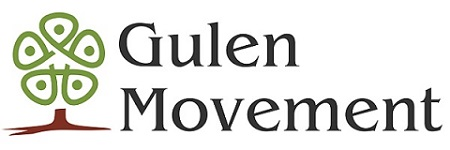
Gökhan Bacık and Ümit Kurt
The revival in Islamic studies of interest in explaining social transformation in Muslim societies has stimulated a need for new methodological inquiries. The binary of Islam and civil society, a repeated thesis, has taken the study of Islam out of the civilian domain and juxtaposed Islamic movements and states (Gellner 1996). However, recent studies, Turkish ones especially, have concluded that Islamic movements are successful without any state agenda. Accordingly, new Islamic movements base their ‘mobilization strategy on transforming everyday practices’ rather than following the former Islamist way of developing political agendas (Tuğal 2009). The focus on daily life reminds the strategic role of informal networks. New Islamic movements, as the agents of daily life, operate mainly through informal networks.
The deployment of informal institutions within daily life is also a rediscovery of the traditional Islamic networks, patterns, values and cognitive forms. Thus, the rise of daily life as the major unit of operation for the new Islamic movements directs them to a completely different position vis-a-vis modernity: to create an alternative Islamic civil society, that is indifferent to the existing modern one. In the past, some radical Islamists had completely rejected modernity. Others, paradoxically, modernized part of their political agenda to sympathize with the state and nationalism. However, the new Islamic movements ply their mobilization strategy in daily life contexts and situate themselves in an irregular position to modernity. Their amodern (neither modern nor anti-modern) position creates its own parallel sphere founded on the traditional patterns of Islam.
The Gülen Movement, with its success at creating trans-national networks, is the perspicuous case for illustrating the amodern worldview of new Islamic movements. Fethullah Gülen is an influential Islamic scholar whose ideas activate millions not only in Turkey but also around the globe (Yavuz and Esposito 2003; Ünal 2000). His Movement is described as ‘the largest Islamic movement in Turkey and the most widely recognized and effective one internationally’ (Turam 2004, 265). How can this Movement activate large masses and realize complex trans-national projects, both of which require sophisticated discourse, persuasion, planning and other social and material procedures? The study of the social dynamics through which the Gülen Movement operates is the natural unit of analysis for any inquiry that seeks an answer to such questions.
‘Amodern’ refers to the traditional networks, symbols, values, institutions, patterns and cognitive forms that pre-date modernity; yet retain the capacity to be effective among people, and for that reason, the ability to transcend the separated forms of modernity.
Therefore, the validity of traditional binaries, such as ‘Islamic movements vs. modernity’, or ‘Islamic movements as products of modernity’, has to be questioned. Being indifferent to the state and operating through daily life, new Islamic movements gain the ability to connect with historical Islam, the roots of which had fixed well before those of modernity.
The significance of the Gülen Movement that has attracted the most scholarly attention is its development of certain networks that transcend national boundaries (West 2006, 284). More critical than its global presence as an institution is the Movement’s capacity to recognize local actors in extra-national contexts. The Movement is not chary of expanding its societal basis. Rather, it sees enlargement as a major networking strategy (Özipek 2010). Creating alternative forms of participation is a serious indicator of the societal capacity of a social movement.
The roots of amodernity in Gülen
Two major areas are particularly important in searching for the roots of amodernity in Gülen: his early socialization in a traditional Islamic milieu and his education in the traditional madrasa system. On these two facts, Gülen is the product and continuation of the traditional Islam that perpetuates itself through informal and civil mechanisms. Socialization in such an environment was for him formative, particularly of his capacity to be an effective agent who utilizes certain amodern networks and patterns.
Fethullah Gülen was born in 1941 in Erzurum, Turkey, a conservative environment that affected him in major ways. The religious values and customs of his social milieu had his family fully engaged, so, despite the radical secularization trends of the late 1930s, his early socialization was completed in a traditional religious environment. This should be seen as the foundation of his daily practices centered approach to religion. Erzurum, located in the very peripheral Eastern part of Turkey, was isolated from the radical modernizing reforms of the 1930s. Traditional Islamic culture still dominated daily life in this area.
The experience of living Islam in daily life marks the difference between ‘daily Islam’ and ‘political Islam’. Gülen, unlike many modern Islamic leaders, would never target modernity’s institutions, such as the state. His Islam is essentially the ‘daily Islam’ that people live. That leaves him indifferent to modern institutions, including the state. Accordingly, the power and transformative effect of Islam is in that it is embedded in the apolitical, routine practices of daily life.
Though hidden and unofficial, Erzurum had a well-established madrasa system in the late 1940s. Gülen learnt basic Islamic sciences in those circles, where important traditional ulema taught as Alvarlı Lütfi, Molla Halil, Vehbi Efendi, Sırrı Efendi, Şehabeddin Efendi, Sadi Efendi (Erdoğan 2006). None of these scholars formulate their teachings as modern texts. Instead, they articulate their ideas according to the traditional Islamic methods. Gülen’s attachment to the historical Islamic literary tradition was nurtured by such scholars. This, no doubt, equipped him with the discursive capacity with which he engaged Islamic networks around the globe. His traditional education enabled him to use the epistemic, structural and social components of Islam as they are practiced in different cultures. Unlike modernized Islamic scholars’ texts, the accent of this traditional education is on the method-based (usul) studies that prioritize the reach of the Islamic code and values into civil and social bodies. The corpus of Islamic literature assigns not government but the alim (scholar) as the main agent of the preservation of this tradition. The high issues of the modern agenda, including that of the state, have never dominated the Islamic literary tradition. Gülen was taught not to formulate his assumptions on the centrality of the state, but on that of the people who form its society.
Having such a background, Gülen’s association with Said Nursi (1874 – 1960) was not surprising. Never involved in daily politics, Nursi’s teachings stressed the individual’s faith as the most important value. His philosophical debates concentrate on man’s position and responsibilities in the universe. To him, the important task was to refute the philosophical basis of positivism. He saw no point in political debate.
Nursi’s attack was directed at modernity. Modernity’s monopolization of science and its atheistic interpretations were Nursi’s two major targets. He formulated his ideas within the classical Islamic tradition, which, of course, is hugely at variance with the modern scientific paradigm. (Nursi’s apolitical and traditional methodology strengthens Gülen’s practice-based social interpretation of Islam, which he acquired during his own early socialization. Gülen, like Nursi, believes that the effective strategy is to create an Islamic milieu in which the individual plays the key role. Rather than correct modernity like Nursi, another major method of Gülen’s is to revitalize the Islamic literary tradition and let it run parallel with the ongoing modernity project.)
Gülen continues this text-centered methodology. As Özdalga (2005, 436) notes, since Nursi, this tradition, which includes the present-day Gülen, has an intellectual format in which texts ‘serve to provide a field of shared values and identities, synthesized at a level of abstraction’. Although Gülen initiated his independent Movement in the 1970s, he made Nursi’s collected works its main intellectual diet, deeming them matchless as creators of group identity. In one sense, Risale-i Nur became the textual space in which Gülen articulates group identity. The key point in explaining the link between Nursi and Gülen is that the latter made an epistemic instrument of Nursi’s intellectual legacy and devised an effective strategy by means of it for forming a group identity. Risale-i Nur helped Gülen keep his followers away from the various effects of modernization. Risale-i Nur became an effective bridge between contemporary Muslims and the Islamic tradition.
The Gülen Movement and amodernity
The Gülen Movement operates mainly through the symbolic, discursive and institutional corridors of the traditional Islamic heritage. These traditional constructs make the social environment permeable by the Movement. The Movement can operate on this amodern terrain even in non-Muslim societies and thus expand its network. Since amodern discursive space is less categorized and divided than the modern space, the Movement easily establishes personal, communal networks with people everywhere. The amodern space provides a protected terrain, where the divisive effects of modernity are reduced.
Gülen prefers to base his teaching strictly on the precedents of historical Islam (Eldridge 2007). His understanding of Islam is not modernized or reformed as modernity compliant categories of natural and social phenomena. He interprets Islam as it was interpreted by classical texts before modernity, in the style of a monism not congruent with the rationally separated, that is the Cartesian, world. More precisely, Gülen’s discourse does not credit the boundaries our modern world has set. In this sense, his discourse seeks to mobilize the universal spiritual elements within the [Islamic] traditions, codes and idioms of the past to advance new symbolic systems that can stand out as guideposts (Williams 2007). Gülen’s activism consists mainly of his commendations of the traditional practices and consciousness that have survived, in their various forms and adaptations, in Muslim daily life (Toğuşlu 2007). Historical Islam is the foundation of the motivation to form networks (2007, 722).
Modernity has radical implications for Muslim societies, for it declares traditional practices completely obsolete (Ashton and Balcı 2008). But their official relegation into the ‘ignorance’ category did not bring an end to those practices. Instead, and paradoxically, it transformed them into invisible and safe operational spaces. The resilience of societal Islam despite oppressive secularization policies is owed to the operational spaces of religion. Yet, the secular e ́lite, Turkey’s included, have failed to develop a political language that is meaningful in such spaces. Consequently, the persistence that keeps all political procedure within the modern space has produced a kind of political aphasia: communication between the masses and the e ́lite has become the weakest link in the political game. Aware of this weakness, Gülen targets the complex trans-national grassroots networks that Islam creates. Therefore, he intends to act as the re-introducer to contemporary audience of these traditional patterns and institutions. Having carved out its own autonomy, and therefore independence of the state e ́lite, the traditional space, unrecognized and therefore not fully supervised, curtails the reach of the modern state.
Attaching itself to the traditional forms of Islam, the Gülen movement does not categorically reject modernity, but acts on an amodern philosophy that is indifferent to it. Gülen neither discards nor even appraises modernity en bloc. His is a selective stance built on certain patterns of Islam, patterns created before modernity and still extant. These amodern spaces are the major operational corridors. Gülen removes the modern system from its commonly accepted position as the framework of political thinking and introduces a larger Islamic cosmological order (West 2006). Yet, the reintroduction of a parallel space is indeed an attempt to negotiate with modernity. Unlike the typical Islamist response to modernity, this negotiation is not limited by moral criticism. Instead, it refutes the interpretation of human life from a monopolistic perspective on modernity and thus reminds of the eligibility of certain amodern Islamic paradigms.
Social relations are produced and reproduced in daily life. Thus, the division ‘formal and informal’, or ‘official and unofficial’, is to be treated with caution in daily life. More importantly, daily life’s propensity to fuse the various social fields creates a potential authority for agents who can coordinate their actions in tune with them. The Gülen Movement thus wants to be an agent of daily life. The popular institutions of modernity are never credited with supremacy. Instead, the major operational field is daily life. Thus, ‘the approach of the Movement, especially through its educational ‘agencies’, is from the grass roots upwards’ (Williams 2007, 790).
This asserts the Gülen Movement’s instrumentalist position in its approach to the state and even to civilization. Since the major unit of analysis in Gülen’s philosophy is daily life, other categories such as ‘city’, ‘state’ and even ‘civilization’ have secondary significance.
Islam does not need the state to survive, but rather, it needs educated and financially rich communities. In a way, it is not the state, but rather, the community, that is needed in a system that is fully democratic. (Cited in Akyol 2008, 31)
The fundamental principles and codes are thus always more decisive than the formal institutions.
Islam does not propose a certain unchangeable form of government or attempt to shape it. Instead, Islam has established fundamental principles that orient a government’s general character, leaving it to the people to choose the type and form of government according to time and circumstances. (Gülen 2001, 133)
As an agent operating on this level, Gülen is not limited by the geographical constraints of the modern state. His networking capacity and his distance from the modern state make him an effective actor with a wide operational geography.
As already noted, Gülen is himself the product of such informal networks. His background, compared with those of the typical Islamic leaders, is highly significant. As Kepel (2004) says, it is not normal to find an Islamic leader with a social science or humanities background. Yet very few of them are formally educated scholars of Islamic classics. In general, most Islamic leaders are lay people without a traditional Islamic education. (Erbakan was an engineer, Sayyid Qutb’s formal education was British and Mawdudi was a journalist.) Therefore, most of Islamic scholars have come up with typical modernist models. Despite the Islamic content of the messages they convey, most of the leading ulema they propagate in the Islamic world are products of modernity. Typically, the major institutions of modernity, such as the state, the nation and even the homeland, form the basis of their discourses. In this vein, Gülen reminds traditional Islamic scholars who wrote their major works before the advent of modernity. For instance, in a typical Gazalian text, the rational boundaries of modernity, such as borders or the homeland, are not observed. Traditional Islamic thought formulates itself in a borderless space. Gülen is very similar to that traditional narrative in terms of rejecting the rational boundaries of modernity. Staying indifferent to modernity, Gülen formulates his philosophy according to the traditional/amodern conventions of Islam.
Two reasons can be advanced to explain how the general settings of the Turkish case facilitate the rise of a social movement like the Gülen Movement. First, Turkey was never colonized, a fact that kept Islamic movements far from any intense struggle with the West. In the long term, this prevented the affiliation of Islamic movements with the idea of the state. Long years of struggles in many Muslim societies to attain independence against the Western colonizer forced Muslims to internalize the idea of the modern state, as well as the relevant ideologies such as nationalism. Second, Turkey has major traditional religious movements, or tariqat, that have kept their distinct social characteristics. Modernity found a highly organized societal Islam in Turkey, where strong civil religious traditions had a certain capacity of response.
The benefits of amodernity
Its amodern characteristics enhance the Gülen Movement’s institutional capacity in various ways. The sustaining of its security is an important sample. Acting mainly through informal networks, and thus not interested in the institutions or forms of modernity, the Movement has a large, secure field of action. It is not seen as an agent that threatens the institutional foundations of the modern system. Thanks to its indifference to the modernist institutions, it is not possible to accuse the Movement of creating an Islamic state, or of promoting a religious political system.
Its indifference to the institutional basis of modernity gives the Movement a strong immunity. Consequently, it has been operationally active in the different legal systems of the world, having never experienced a major problem, not even in critical times when authorities are highly alert to Islamic movements and to religious terrorism. The bureaucratic settings of modernity never identify Gülen’s informal network as a risky organization. Acting within the structures of centuries’ old patterns makes the Movement invisible.
Again in the context of security, its amodern characteristics protect the Gülen Movement from any local nationalist reaction. Political Islamist movements, as a result of their overemphasizing of the state, turned out in the end to be nationalist actions. Most contemporary Islamic movements are in fact modern and nationalist.
Since many Islamic movements were created and evolved as resistance to foreign occupation, the idea of the state has become a significant aspect of Islamism. Likewise, Islamists dream of using the modern state for their aims of creating a more religious society. Notwithstanding their philosophical clash with modernity, those Islamic movements are eager to capture the institutions of modernity. However, the societal approach that operates mainly through the informal networks has prevented the Gülen Movement’s fall into the nationalist trap. In no state among the hundreds where Gülen is active has there been a nationalist reaction to the Movement. For instance, the Movement is very successful in Iraqi Kurdistan, paradoxically the country that has the thorniest problems with Turkey. Apart from its several schools, the Movement has Ishik University in Arbil. Despite their problems with Turkey, Kurds support the Movement’s schools. (1) The success in the Kurdish region is due mainly to the Movement’s indifference to the modern configuration of the politics of Turkey and Iraqi Kurdistan.
The public space created by the Movement does not recognize the political divisions of modern institutions. For example, in Nigeria, we observed that families with different religious and political backgrounds send their children to the Movement’s schools precisely because they are seen as neutral public spaces. (2)
Finally, if a network has a capacity to generate a level of legitimacy, the agents of that network benefit (Podolny and Page 1998). Similarly, the Gülen Movement has gained legitimacy among Muslims around the globe because of its use of the amodern networks of Islam. The centuries old religious tradition, along with its sophisticated symbols, become the catalyst of the Gülen Movement’s legitimacy. Gülen’s intellectual connection with the Islamic literary tradition is also his operational corridor to all the parts of the Islamic community. Interestingly, the Gülen Movement’s legitimacy benefits also from other traditions, such as that of Christianity. Unlike several modern scholars who follow a refutation-based approach to the other Abrahamic religions, Gülen incorporates them into the sphere of Islam as the historical and integral parts of the Muslim faith. Additionally, the Movement has a very close relationship with the representatives of other religions. Gülen himself has met senior clergy, including Pope John Paul II, Bartholomew I, the head of the Istanbul Orthodox Church, Cardinal Arinze of the Vatican, and Cardinal O’Connor, the Archbishop of New York. A Gülen Chair was created by the Australian Catholic University with a mission to work on Muslim–Catholic relations. Such bonds are also very important in sustaining the Movement’s legitimacy, especially in Christian societies. For example, during a field study in various Christian societies such as Lagos (Nigeria) and Clemson (the USA), we observed that the Movement has closed relations with the local Christian communities. It frequently uses the local churches for its social programs. Intensive contacts with other religions also enable the Gülen Movement to benefit from these informal networks, increasing its own legitimacy among local publics.
Conclusion
Our observations on the Gülen Movement have shown that an irregular attitude to modernity exists as a third option. Unlike the anti- or pro-stances, the amodern alternative forms itself on the traditional codes of Islam. In practice, this is a rediscovery of the traditional Islamic codes and patterns that had their inception in the classical ages of Islam. Rediscovering it, the Gülen Movement carves out a sphere independent of modern institutions, and in that sphere, easily creates trans-national networks. The rediscovery of the Islam’s amodern sphere bypasses modernity’s disciplines. In that sphere, Islam is not conceptualized through the precepts of modernity nor as a stance against them. Instead, there is an intention to bring the classical Islamic heritage to the present daily life of the Muslim world.
The rediscovery of amodern Islam may equip new Islamic movements with serious capabilities. Amodern Islam has the capacity to create trans-national networks among Muslims because it transcends the rationally separated institutions of modernity. Anchored by the traditional matrix of Islam, it is possible to operate easily on the holistic terrain of historical Islam. Thus, the rise of the amodern sphere necessitates the analysis of how Islam reproduces itself through informal institutions. Informal corridors have been the major mechanism that keeps Islam alive. Most of the modernization projects in the Middle East have been limited to the urban centers, the bureaucratic matrices of states. Islam’s behavioral and cognitive patterns survive as informal mechanisms outside the realms of urban officialdom. Its informal patterns are vital in an explanation of the expansion of the Gülen Movement to many countries.
Finally, the amodern approach is more revolutionary in terms of its transformative effects, for it operates through daily life.
Notes
(1) Interview with Ahmet Dinç, 15 February 2009, Arbil.
(2) Field Study in Lagos and Kaduna, Nigeria, June 2005.
Source:
Summarized from “New Islamic movements and amodern networks. Culture and Religion, Vol. 12, No. 1, March 2011, pages: 21–37.”
References
Akyol, Mustafa. 2008. What made the Gülen Movement possible? Proceedings of the conference Islam in the age of global challenges: Alternative perspectives of the Gulen Movement. Georgetown University, November 14–15, 22–32.
Ashton, Loye, and Tamer Balcı. 2008. A contextual analysis of the supporters and critics of the Gülen/Hizmet Movement’. In Proceedings of the conference Islam in the age of global challenges: Alternative perspectives of the Gulen Movement, November 14 – 15, Georgetown University, 859–925.
Eldridge, Bruce. (2007). The place of the Gülen movement in the intellectual history of Islam, particularly in relation to Islam’s confrontation with postmodernism. In Muslim world in transition: Contributions of the Gülen Movement, ed. İhsan Yılmaz. 526–38. London: Leeds Metropolitan University Press.
Erdoğan, Latif. 2006. Küçük Dünyam. Istanbul: Ufuk.
Gellner, Ernest. 1996. Conditions of liberty. London: Cambridge University Press.
Gülen, Fetullah. 2001. Comparative approach to Islam and democracy. SAIS Review 21, no. 2: 133–8.
Kepel, Gilles. 2004. Jihad the trail of political Islam. London: I.B. Tauris.
Özdalga, Elisabeth. 2005. Redeemer or outsider? The Gülen community in the civilizing process. The Muslim Word 95, no. 3: 429–46.
Özipek, Aydın. 2010. The Gülen Movement: ‘Cultivating’ a generation through education. Saarbrücken: LAP Lambert Academic Publishing.
Podolny, Joel, and Karen L. Page. 1998. Network forms of organization. Annual Review of Sociology 24: 57–76.
Toğuşlu, Erkan. 2007. Hizmet: From futuwwa tradition to the emergence of movement in public space. In Proceedings of the conference Islam in the age of global challenges: Alternative perspectives of the Gulen Movement, November 14–15, 711–29, Georgetown University.
Tuğal, Cihan. 2009. Transforming everyday life: Islamism and social movement theory. Theory and Society 38, no. 5: 423–58.
Turam, Berna. 2004. The politics of engagement between Islam and the secular state: Ambivalences of civil society. The British Journal of Sociology 55, no. 2: 259–81.
Ünal, Ali. 2000. Advocate of dialogue: Fethullah Gulen. Kampala: Fountain Publication.
West, W. Jefferson, II. 2006. Religion as dissident geopolitics? Geopolitical discussions within the recent publications of Fethullah Gülen. Geopolitics 11, no. 2: 280–99.
Williams, Ian. 2007. A movement in counter-point: The significance of the Fethullah Gülen Movement as a global educational and inter-religious model of social and religious change – a UK perspective. In Proceedings of the conference Islam in the age of global challenges: Alternative Perspectives of the Gülen Movement, November 14–15, Georgetown University, 782–806.
Yavuz, M. Hakan, and John L. Esposito. 2003. Turkish Islam and the secular state: The Gülen Movement. Syracuse, NY: Syracuse University Press.
Tags: Fethullah Gülen's philosophy | Gulen Movement | Modernity |Related Articles

How does Gülen Movement achieve cohesion despite its decentralized and non-authoritarian structure?
Muhammed Cetin Participation in services takes relatively stable, enduring forms. Individuals come and go and replace one another but the projects remain and continue. Individual needs and collective…

What kind of a change does Fethullah Gülen offer?
According to Gülen, the chaos and turmoil has spread on earth because of the lack of morality. High quality education is needed for this reason: to eradicate the…

Fethullah Gülen’s view on projects like “Islamic Common Market” or “Union of Muslim Countries”
It is imperative that alliances do not harm other countries and extra precautions must be taken to avoid causing tensions. In this regard, Gülen states: For alliances and…
